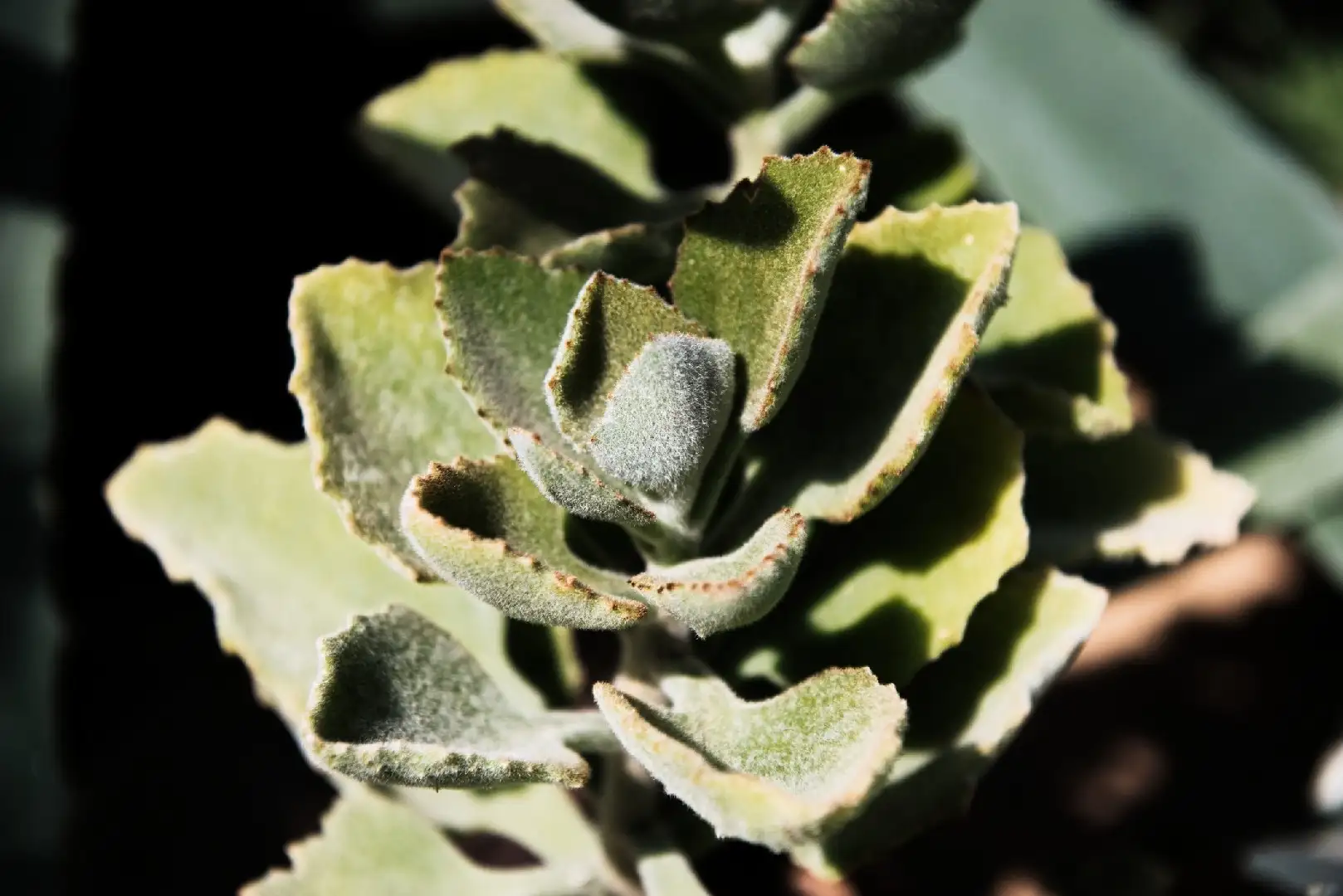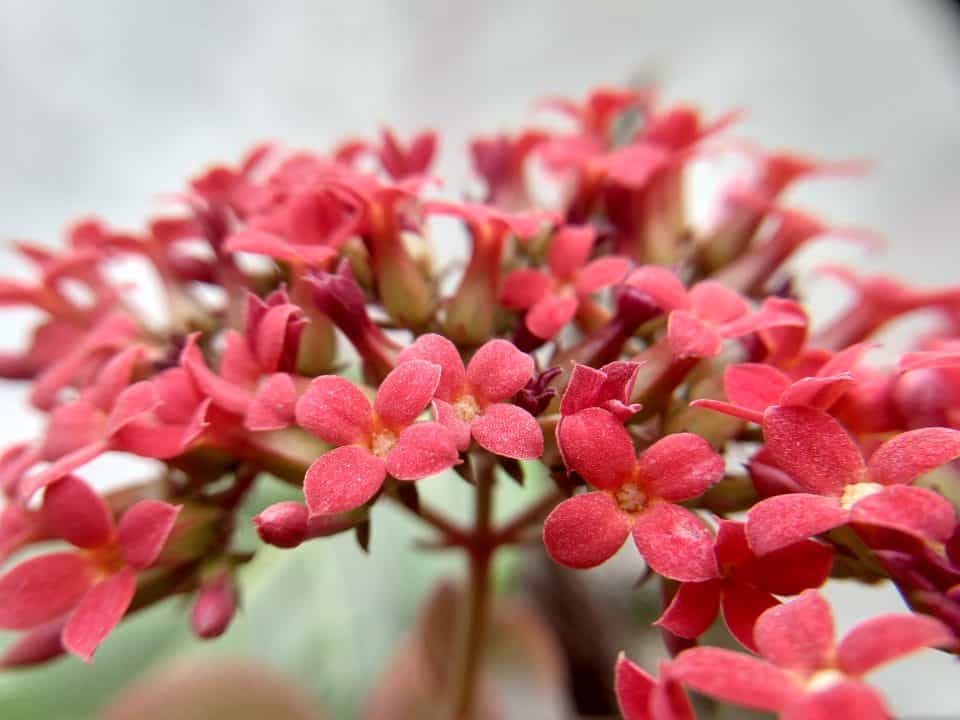The kalanchoe pumila, also known as the flowering kalanchoe or flower dust plant, is a succulent plant native to Africa and Madagascar, but it has since become widespread in cultivation around the world.
It grows as an evergreen plant with dark green leaves that have jagged edges, and has yellow and red flowers in the spring and summer months, depending on the variety of kalanchoe pumila you choose to grow.
The flower dust plant can thrive outdoors in U.S. Department of Agriculture hardiness zones 9 through 11, and indoors anywhere if given enough light, humidity, heat, and water.
It’s been said that hardy succulents like the Kalanchoe Pumila are some of the easiest plants to grow in your home or garden. You’ll just need water and sunlight, and you can even expect to see beautiful flowers bloom once the plant grows bigger! This plant works especially well as an accent piece in your living room, your kitchen window, or even your bathroom!
Learning about kalanchoe pumila will help you make the most of this fun little succulent that can grow both indoors and outdoors in milder climates. This flowering houseplant will reward you with colorful flowers that look great in any home, whether they’re in hanging baskets or on kitchen windowsills. Plus, they’re easy to care for once you understand the basics behind their soil, water, and sun requirements!
Origin and distribution
Kalanchoe pumila is native to Madagascar. It is a succulent plant and a member of the Crassulaceae family. The plant is also known as the flower dust plant because of the powdery white substance that covers its leaves. This plant can be found in cultivation in many parts of the world, including Europe, Australia, and North America.
The plant grows well indoors with moderate light and plenty of moisture. In nature, kalanchoe pumila will grow in arid or semi-arid regions with little rainfall, but it thrives when grown indoors. The plant does not require much maintenance beyond watering occasionally and pruning any dead foliage.
As long as you provide your succulent with an environment with cool temperatures between 50 degrees Fahrenheit to 80 degrees Fahrenheit, the plant should be healthy and produce blooms year-round.
Kalanchoe pumila propagation

Kalanchoe pumila can be propagated by seed, stem cuttings, or leaf cuttings. To propagate by seed, sow the seeds in a well-draining potting mix and keep them moist. Stem cuttings can be taken from new growth and rooted in a potting mix. Leaf cuttings can be taken from non-flowering stems and rooted in a potting mix. The plant will take around 3 months to flower again.
Kalachoe pumila is also known as the flower of Morocco because it is native to this region of Africa but has been introduced to many other regions around the world as an ornamental garden plant. The succulent leaves of this houseplant are green with white hairs on the underside that give it a fuzzy appearance when they grow close together near ground level.
When grown outdoors, it prefers dry soil and full sun exposure. It is sensitive to frost so must be brought indoors before the first hard frost occurs.
Kalanchoe pumila care information

Kalanchoe pumila is a beautiful, low-maintenance plant that is perfect for adding a touch of color to any room. If you’re looking for a plant that is easy to care for and doesn’t require a lot of attention, then the Kalanchoe pumila is the perfect choice for you!
Light requirement
This plant prefers bright, indirect light but can tolerate lower light levels. If the leaves begin to yellow or the plant starts to stretch, it is an indication that it is not getting enough light. Move it to a brighter location. Flowering will also be affected if the plant does not get enough light.
Soil/potting mix
This plant does best in a well-draining potting mix. You can use a commercial potting mix or make your own by mixing together equal parts peat moss, perlite, and sand. Be sure to water the mix thoroughly before planting and then allow it to drain completely.
The plant will do best if you keep the soil moist during the growing season but don’t overwater as this will cause root rot.
Watering
The Kalanchoe pumila should be watered about once a week, and allowed to dry out in between waterings. They are drought tolerant, so they don’t need a lot of water. When watering, make sure to avoid getting water on the leaves, as this can cause them to rot.
In winter, water sparingly so that there is only enough moisture for the leaves to remain pliable but not so much that they start drooping from being overwatered. If you live in an area with cold winters, you may want to keep your plant indoors until springtime.
Fertilizer
This succulent is not a heavy feeder, so you don’t need to fertilize it very often. A light feeding every other month or so should be plenty. If you do fertilize, use a succulent-specific fertilizer and apply it sparingly.
Too much fertilizer can damage the plant’s roots, especially if applied in hot weather. It’s best to err on the side of caution when applying any type of fertilizer.
Temperature
Kalanchoe pumila is a tropical plant that prefers warm weather. It can tolerate some cold, but not prolonged exposure to temperatures below freezing. The ideal temperature range is between 70 and 90 degrees Fahrenheit.
If the temperature falls below 60 degrees, this may cause the leaves to wilt. To keep your plant healthy, provide it with plenty of light and water it regularly.
Humidity
Kalanchoe pumila, also known as the flower dust plant, is a succulent that thrives in high-humidity environments. If you live in an area with high humidity, you can easily grow this plant indoors by simply watering it every day and keeping it close to a humidifier or using any other method of generating moist air.
You can even place your pot on top of a dish or bowl filled with water to increase the amount of moisture near your plant.
The ideal humidity range is between 40-80%. However, don’t let your soil get soggy wet; make sure it has some dryness to it at all times. One way to do this is by making sure there are holes in the bottom of the pot so that excess water can drain out.
Pruning
Kalanchoe pumila is a succulent that produces small, pink, bell-shaped flowers. It is a low-maintenance plant that can be pruned to keep it looking its best. To prune, simply remove any dead or dying leaves and stems.
You can also trim back any leggy growth to encourage a fuller plant. Be sure to use sharp clippers to avoid accidentally damaging the stem of the plant. Finally, water it well after you have finished pruning so that the roots will not dry out.
When to repot
You’ll know it’s time to repot your kalanchoe pumila when the plant becomes pot-bound, meaning the roots have filled up the pot and there’s no room for them to grow. This can happen every one to two years.
If you see that the plant is starting to outgrow its pot, gently remove it from the pot and check the roots. If they’re tightly bound, it’s time for a new pot. Choose one that’s only slightly larger than the old one.
Put some pebbles or small rocks in the bottom of the pot, then add your soil mix so it’s about 1 inch away from the top of the pot. Put your plant in and fill in around it with more soil until you’ve reached just below the top of the pot. Tamp down on any air pockets with your fingers and water thoroughly until water starts running out of drainage holes at bottom of the pot.
Dormancy/Winter rest
Kalanchoe pumila plants enter a state of dormancy during the winter months. This is a time of rest for the plant, when growth slows and leaves may fall off. The plant does not need to be watered as often during this period and should be kept in a cool, dry place.
Flowering typically resumes in late winter or early spring, when the plant emerges from its dormancy period. If you want your kalanchoe to bloom again next year, it’s important that you don’t cut off the flowers before they’ve gone through their natural cycle of life. Cut them after they’ve wilted, but before they go brown and dried out.
Kalanchoe pumila flower & fragrance

Kalanchoe pumila, the flower dust plant, is a succulent that produces small, fragrant flowers. The plant is a popular houseplant because it is easy to care for and its flowers add a touch of beauty to any room.
Growth rate
Kalanchoe pumila is a fast-growing plant that can reach up to 12 inches in height and width. It can also produce blooms year-round, which makes it an excellent addition to a variety of indoor gardens.
Toxicity
All parts of the plant are toxic if ingested, with the leaves containing the highest concentration of toxins. Symptoms of ingestion include vomiting, diarrhea, and tremors. If ingested, seek medical attention immediately as a reaction to ingesting this plant can be fatal. Keep away from pets and children as they may chew on it or eat it in error.
USDA hardiness zones
Kalanchoe pumila thrives in USDA hardiness zones 9-11. You can grow this plant outdoors in mild climates, but it prefers indirect sunlight or very bright, filtered light indoors.
Pests and diseases
Kalanchoes are generally very easy to grow and are resistant to most pests and diseases. However, they can be susceptible to mealybugs, aphids, and spider mites.
If you notice any of these pests on your plant, you can remove them by hand or treat them with an insecticide. Kalanchoes can also be susceptible to root rot, so make sure to plant them in well-draining soil.






